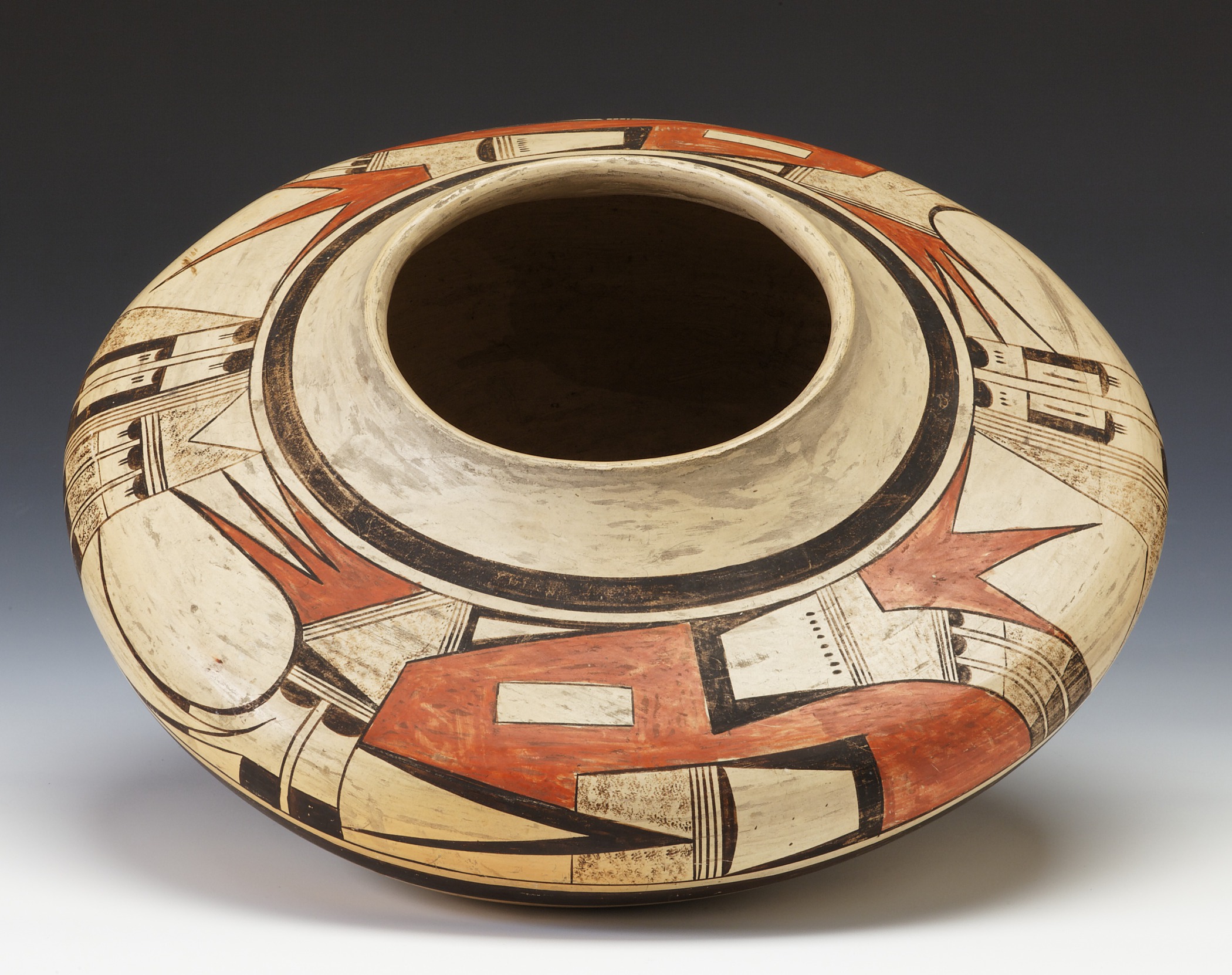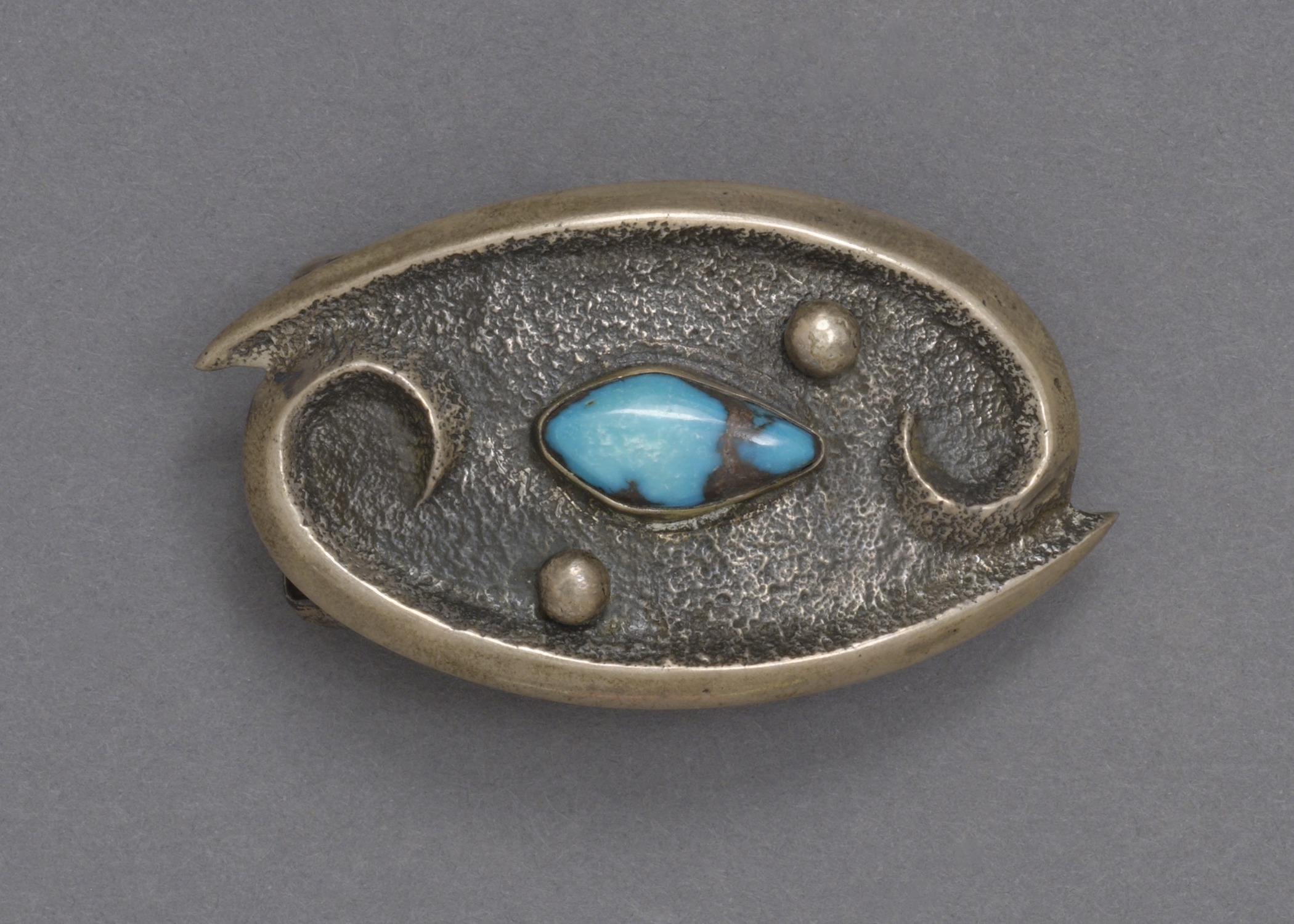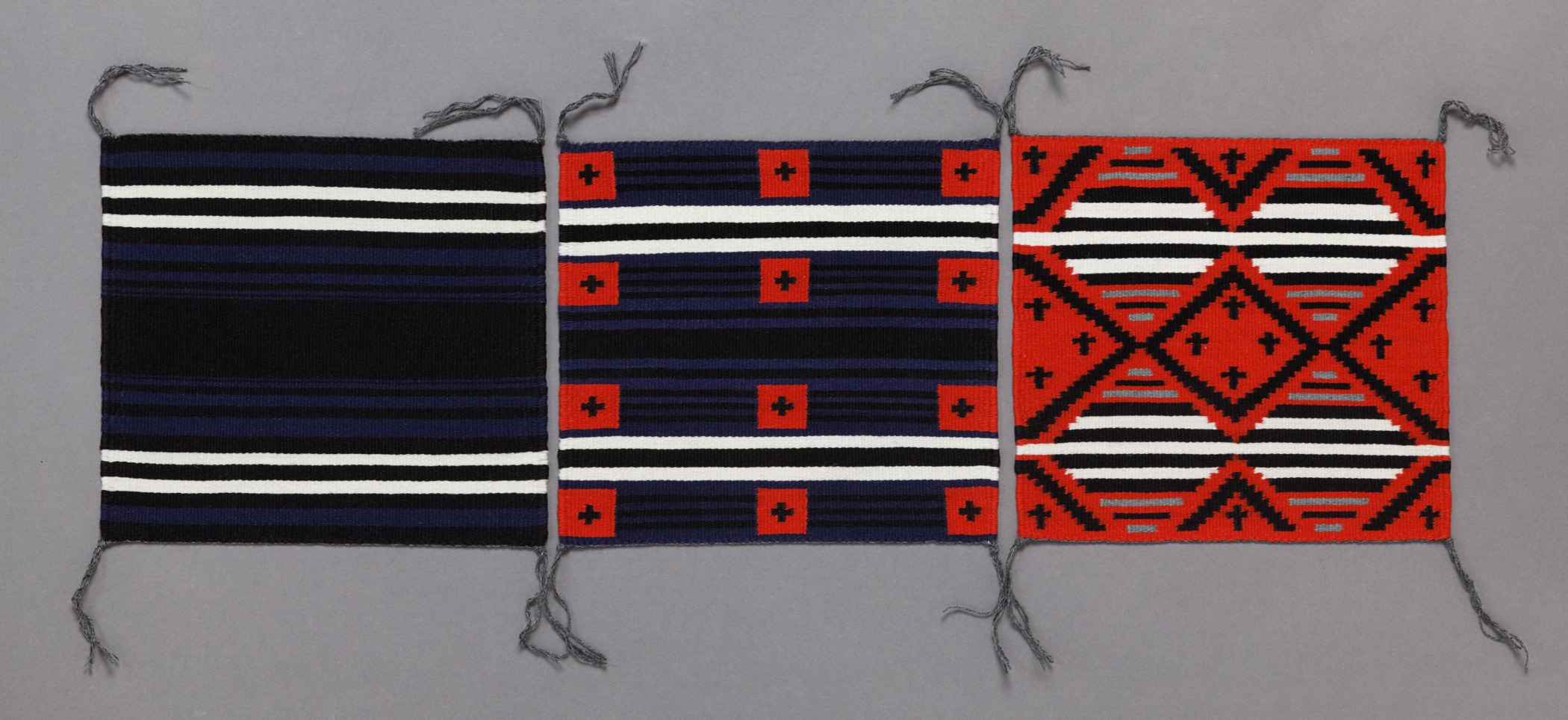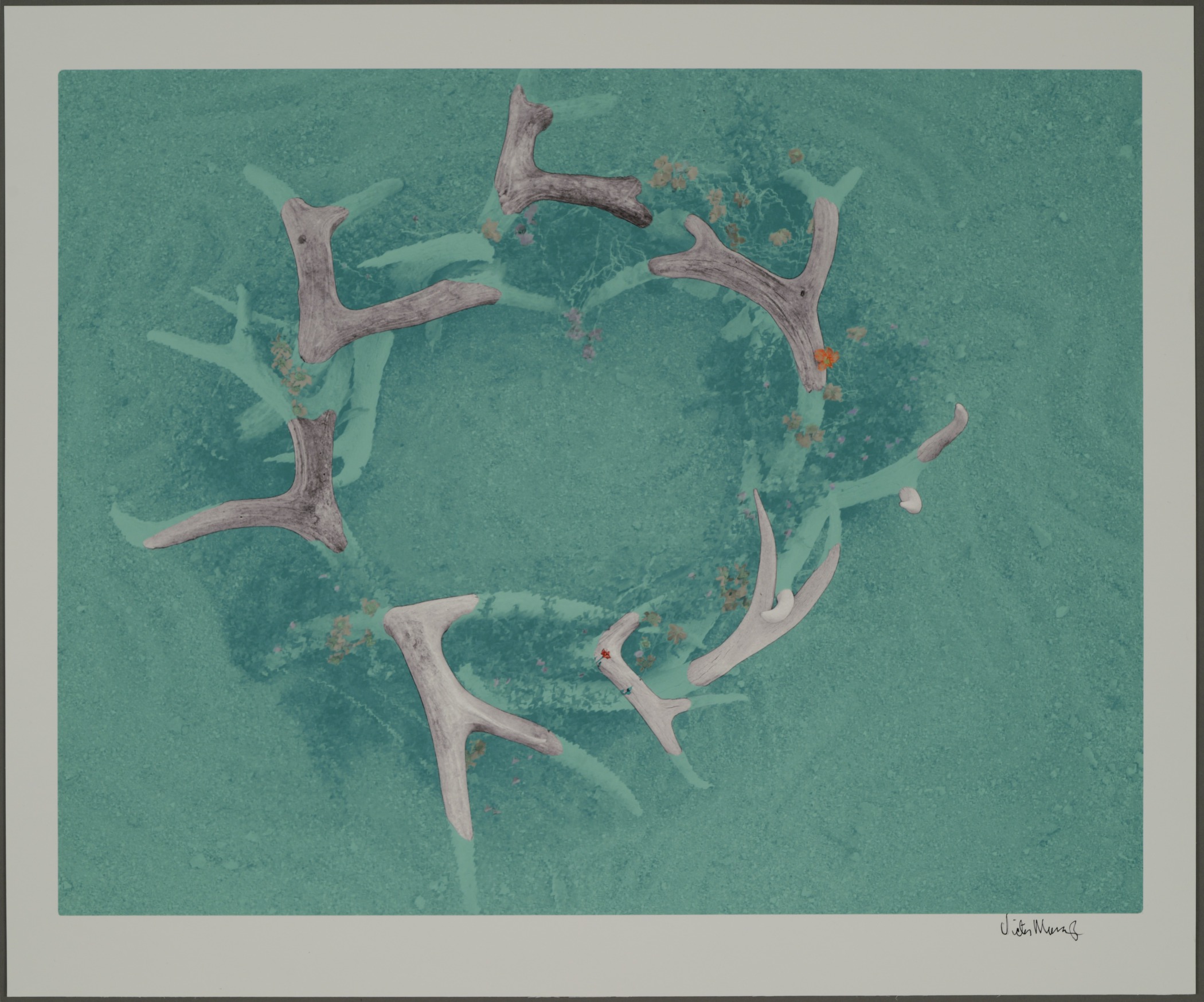Nampeyo, American (Hopi), about 1860–1942
Seed jar
- 1900–10
- Earthenware, painted with colored slips and burnished
- 5 11/16 × 12 3/16 in.
Hood Museum of Art, Dartmouth College: Gift of Emily W. and George H. Browne; 42.12.8107
visibilityLook & DiscussNampeyo, a Hopi-Tewa woman, is one of the best known and most admired of all Native American potters. She learned to make pots from her paternal grandmother, and her skills were recognized by the time she was 20. She made a steady income selling her work at the trading post established on the Hopi Reservation in 1875, and later to tourists arriving in the Southwest on the Santa Fe Railroad. As her fame spread, demand for her pottery grew all over the United States and Europe. She inspired her own children and generations of Hopi potters to make a living working with clay and thereby remain close to their home and their traditions.
Although she made pots in many shapes and sizes, this pot shape was Nampeyo’s favorite. It is known as a seed jar.
explore the object
Nampeyo is known for creating a modern style of Hopi pottery called Sikyatki Revival. Sikyatki is an ancient ruin on the Hopi reservation. Nampeyo noticed that ancient pottery sherds found on the reservation were harder, smoother, and denser than the pottery of her time. From these fragments, she began to reconstruct the design system and color of old Sikyatki pots. She then experimented with various clays until she discovered a superior, yellow-firing clay from Sikyatki, and she also experimented with paints and pigments to duplicate the color, shapes, and forms of ancient pots. At first her pots looked very similar to the original Sikyatki designs, but eventually Nampeyo developed her own style inspired by traditional designs.
Nampeyo’s designs are often asymmetrical and covered with bird wings or beaks in abstracted form. Birds are associated with rain and fertility. The designs are divided into four distinct units around the sides of the pot. The units may refer to the four directions, while the opening of the pot may reflect the entrance into this world from the world beneath—the place of emergence for the Hopi people. To execute her designs, Nampeyo used many colors, including reds, browns, yellows, and blacks created through a mix of vegetal pigments and minerals.
Nampeyo’s vessels came in a variety of forms, but the seed jar, a squat, wide-shouldered vessel with a narrow opening, appealed most to her. Seed jars were originally designed to protect next year’s seeds from rodents, and had only a small opening. Later, artists paid homage to the seed jar by using the traditional shape but creating a wider opening at the top.
meet the artist
When I first began to paint, I used to go to the ancient village and pick up pieces of pottery and copy the designs. That is how I learned to paint. But now, I just close my eyes and see designs and I paint them.
— Nampeyo (See nmai.si.edu.)
Nampeyo grew up in the Hano village on First Mesa, on the Hopi reservation in Arizona. This settlement on a high plateau was home to three villages, the oldest of which has been continuously inhabited for 1,100 years.
Thomas Keam established a trading post on the Hopi Reservation in 1875. He hired Hopi potters to create pots inspired by those found in archaeological sites. Nampeyo’s work was recognized as the best. As her skills grew, she demonstrated ceramic techniques to native and non-native visitors and posed for many photographs. She is perhaps the most photographed of all native potters. She became a symbol of Hopi culture and her photograph was used to encourage tourism in the Southwest. In 1898, she travelled to Chicago to exhibit her pottery at the Columbian Exposition. From 1905 to 1907, she made and sold pottery out of the Hopi House, a tourist attraction near the Grand Canyon Lodge. The demand for her work became so great that she had to make smaller vessels and rely on family members to decorate them. Her pots are now in museum collections all over the world.
learn more
Watch this video to see art historian Joyce Szabo discuss this pot by Nampeyo.





